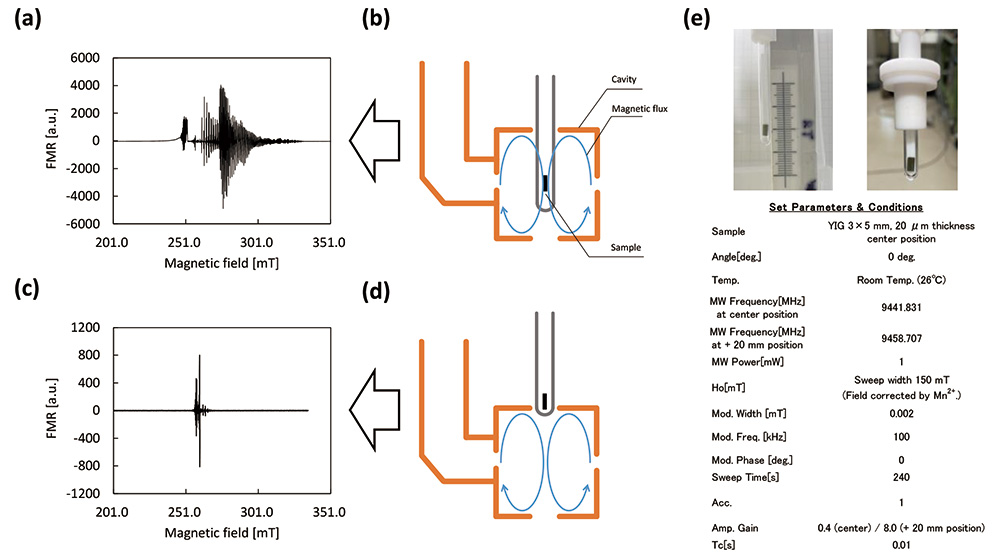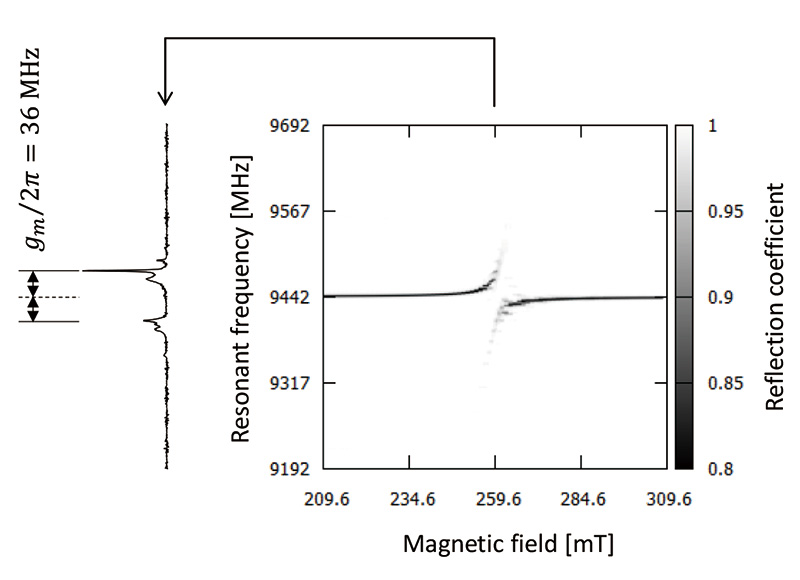Strong interaction between light and electrons (3) "Strong coupling state of ferromagnetic thin film"
- |
- 2 MIN READ |
- 1500 |
- January 29, 2021 |
- Electron Spin Resonance (ESR) |
-

Coupling constant (𝑔𝑚) between microwave photon and electron spins is proportional to the square root of spin numbers as shown in eq.(1) of "Application Note ER200007E ". Therefore, FMR measurements using ferromagnets which include many spins and especially have narrow line widths do not work well, because spins in ferromagnets interact strongly with microwave photon, and achieve to "strong coupling" state larger than the state of "Purcell effect". Figure 1(a) is an example that shows the obtained unexpected spectrum in the strong coupling state. Normal FMR spectrum can be obtained as shown in Fig.1(d), if the filling factor is reduced and the system moves to a "weak coupling" state.

Fig. 1 FMR spectral examples using ferromagnetic thin film (yttrium iron garnet(YIG)).
(a) Extraordinary spectrum obtained in the strong coupling state. (b) Sample position in the cavity. This produces a spectrum of (a). (c) Ordinary spectrum obtained in the weak coupling state. (d) Sample position in the cavity. This produces a spectrum of (c). (e) YIG thin film sample.
Frequency spectra of the cavity in "strong coupling" state.

Fig. 2 An example of frequency spectra of YIG-CMP system.
Figure 2 is a mapping chart that frequency spectra (Q-dip) of the cavity are arrayed on the respective measured magnetic fields. Different from the "Purcell effect", as closing to the resonant field, spectral peak splits to two and shifts repulsively. The coupling constant can be estimated as 𝑔𝑚 ∕ 2𝜋 = 36 MHz from the splitting width of spectrum on the resonant magnetic field which an arrow indicates. This system is regarded as strong coupling state, because 𝑔𝑚 is larger than kc 𝑎𝑛𝑑 𝛾𝑚 , where QL is ca 8200 (kc ∕ 2𝜋 = 0.55 MHz), and the spectral half width is ca 75 μT (𝛾𝑚 / 2𝜋=2.1 MHz). The system that a cavity and a magnon belong to strong coupling state is called "cavity magnon polariton (CMP)". The CMP system is recently gathering a lot attention in quantum optics and quantum information, as an artificial quantum or quasi particle which is unified between microwave photon and spins of a magnon[1].
Reference: [1] M. Harder and C.-M. Hu, Solid State Physics 69, 47 (2018).